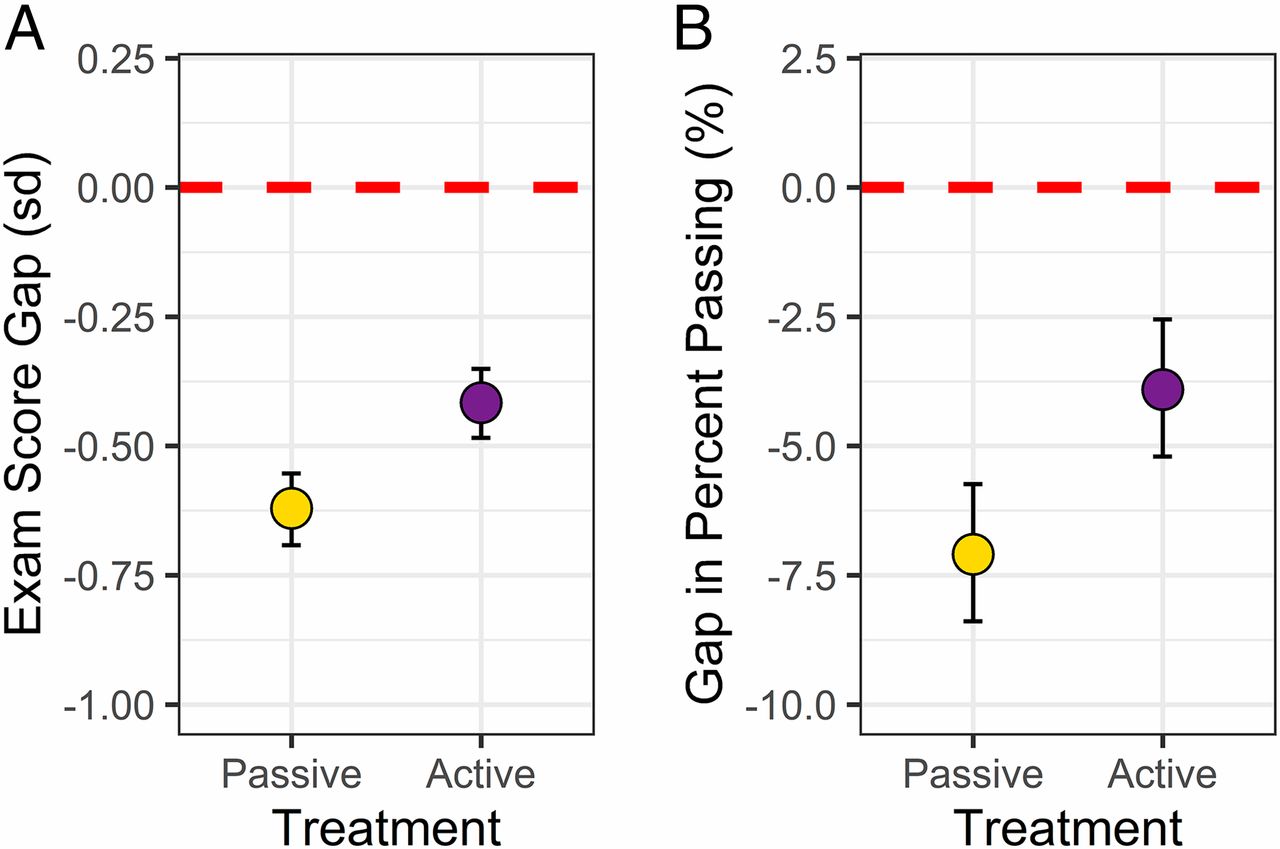Active learning reduces learning gaps

Low-income and racial and ethnic minority (URM) students are sorely underrepresented in STEM disciplines. Much of this underrepresentation is due to attrition stemming from achievement gaps like lower exam scores and higher failure rates. Changes in course instruction, like a switch to active learning, dramatically increase performance and passing rates for all students. We wondered whether active learning may also disprorportionately benefit URM students.
As part of this collaborative effort, I read through the educational research literature and coded and quantified those studies that addressed the effect of on student performance when implementating either active learning or traditional lecturing within the same course. In total, we gathered data from over 53,000 undergradutes, and found that active learning did indeed reduce achievement gaps in exam scores by 33% and narrowed gaps in failure rates by 45%. These results are robust across all STEM disciplines, introductory and upper-division courses, and class size.
Through this collaboration, I gained a thorough familiarity with the education research literature. I am committed to using active learning in the classroom for the benefit of all my students.